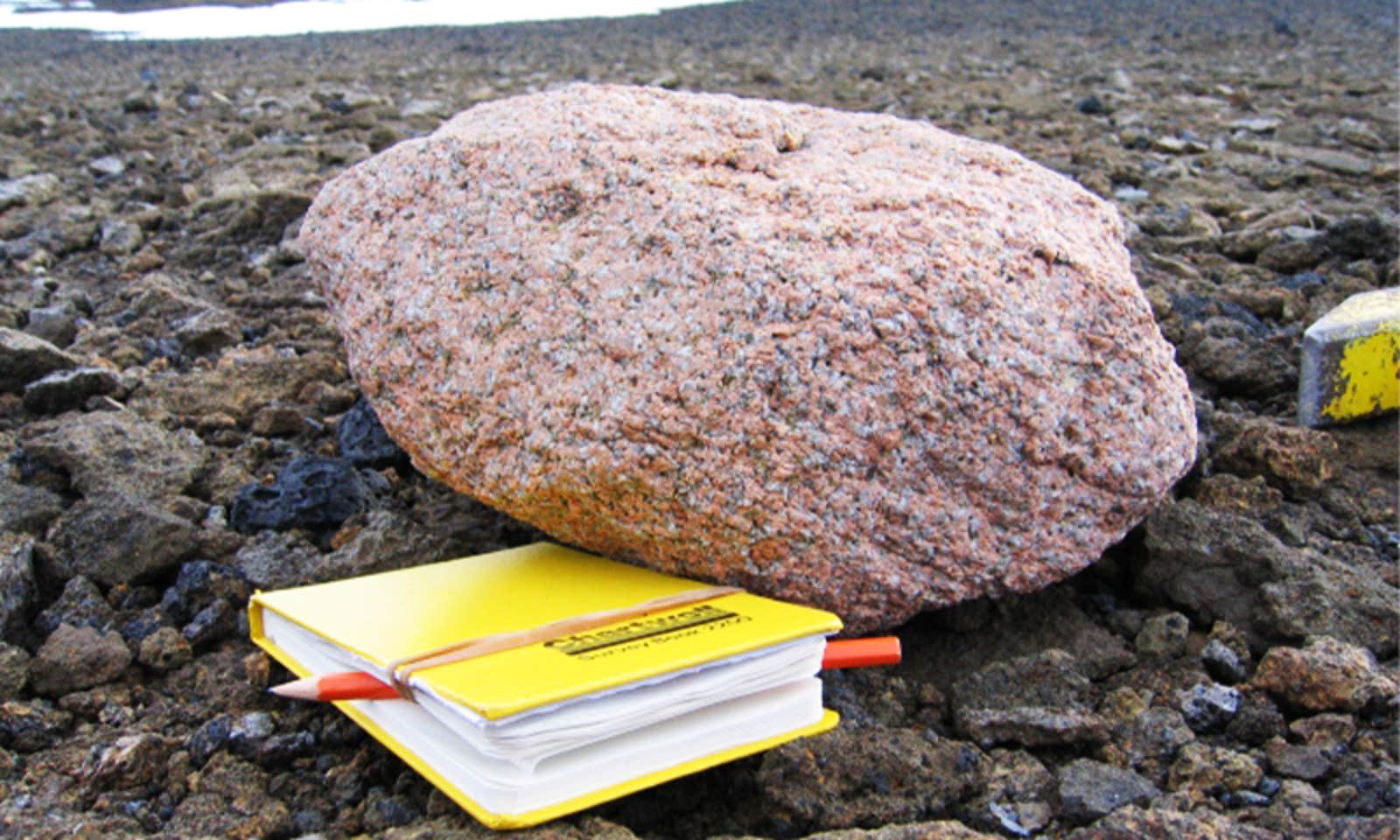Unlikely pink granite boulders perched high atop looming volcanic mountains in West Antarctica have yielded their secrets after decades of baffling scientists. By taking precise gravity measurements using airplane-mounted instruments, a team led by researchers with the British Antarctic Survey have suggested that the boulders are mere crumbs of a huge slab of granite buried beneath the massive Pine Island Glacier.
The slowly flowing glacier, the scientists posit, has been grinding across a deep bed of granite, which is more than 60 miles wide and nearly 4.5 miles thick, for millennia. During this journey, the glacier has been scratching up boulders and depositing them high in the Hudson Mountains, most likely back when the ice sheet was much thicker than it is presently. The researchers dated the boulders by measuring the radioactive decay of elements locked within and found that the rocks formed about 175 million years ago, 75 million years earlier than most of the surrounding rock. The researchers published their findings in Communications Earth & Environment this week.
“It’s remarkable that pink granite boulders spotted on the surface have led us to a hidden giant beneath the ice,” Tom Jordan, a BAS geophysicist and lead author of the paper, said in a statement. “By combining geological dating with gravity surveys, we’ve not only solved a mystery about where these rocks came from, but also uncovered new information about how the ice sheet flowed in the past and how it might change in the future.”
That future bit is important. The region of West Antarctica where Pine Island Glacier site has experienced some of the fastest ice loss in the frozen continent over the past few decades, as climate change has accelerated. And knowing what lies beneath such dynamic ice fields can help predict the fate of such features and how their demise might trigger environmental change across the globe.
“We have been able to piece together how [the pink boulders] got to where they are today, giving us clues about how the West Antarctic Ice Sheet may change in future,” Joanne Johnson, a BAS geologist and coauthor of the paper said. “[This is] information that is vital for determining the impact of sea level rise on coastal populations around the world.”
Who’d have thought that strange pink boulders in an unlikely place held such big secrets? ![]()
Enjoying Nautilus? Subscribe to our free newsletter.
Lead image: Jo Johnson, BAS
































